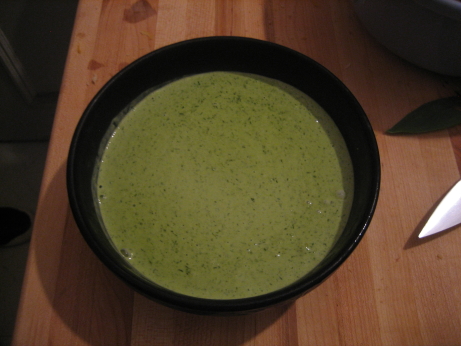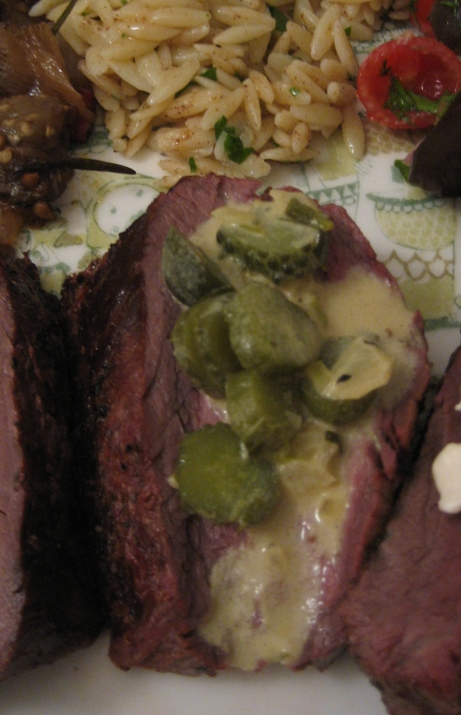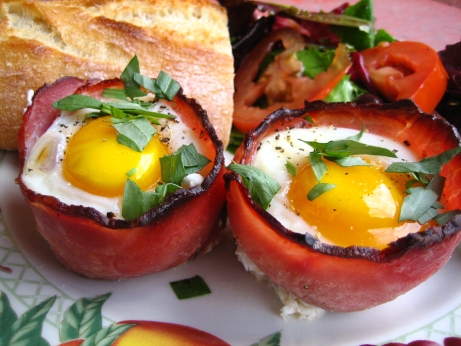This mayo is meant to accompany the Poached Salmon in Aspic. I wasn’t quite sure why an aspic covered fish, served with aspic on the side, needed a mayonnaise as well. My guests didn’t eat much of this mayo with the salmon, possibly because I didn’t make it obvious enough that they were meant to be served together, but I suspect it was because no one really felt it was lacking in mayo. If it had just been a poached salmon, a nice sauce would be appreciated, but it seemed out of place with the aspic.
The recipe is dead simple. I started with a cup of yesterday’s recipe for plain mayonnaise. I ran parsley, chives, tarragon, and dill through the food processor with lemon juice and half the mayo. I omitted the optional chervil. Once it was smooth, I added the rest of the mayo, and stuck it in the fridge to come together for a couple of hours.
It tasted very much like mayonnaise with a bunch of herbs puréed into it. Fresh herbs are almost always nice, and they added all sorts of flavour to the mayo. Tarragon and dill aren’t subtle, so it was fairly bold. The additional lemon juice and water from the herbs thinned it out a lot, so it was more of a drizzling than a spreading mayo. As I said, it didn’t do much for the salmon, so I was left with a lot of this. I couldn’t really think of many other uses though. I tried sandwiches, I tried serving it with grilled chicken, and I put some on asparagus. In all cases it was just fine, but I would have preferred plain old mayo, or perhaps an aïoli. Simply grilled or poached fish would be a natural use for this, which I wouldn’t mind trying it at some point, and if it were thicker it could be quite interesting with French fries.
I’m sure there’s a dish out there just begging for a drizzle of green mayonnaise, but I haven’t found it yet.


